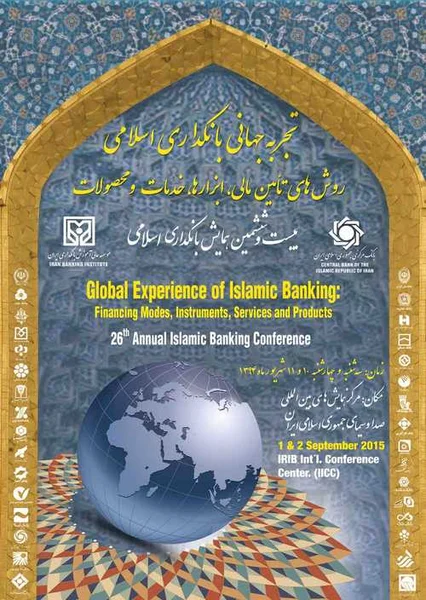-
reducing fragility? risk shifting and islamic banking
جزئیات بیشتر مقاله- تاریخ ارائه: 1395/07/01
- تاریخ انتشار در تی پی بین: 1395/07/01
- تعداد بازدید: 404
- تعداد پرسش و پاسخ ها: 0
- شماره تماس دبیرخانه رویداد: -
in the last five decades, advances in information technology and in financial innovations have made possible the emergence of an immense capacity for banks to switch regimes from risk transfer to risk shifting. the devastating power of this capacity was amply pronounced in the financial crisis of 2007/2008. the fallout of which has intensified calls for a re-examination of current banking model and its underlying incentives‟ structure. risk shifting is, axiomatically, absent in an ideal islamic financial system. the islamic banking model, thus, provides unique paradigm with risk sharing at its core. however, the present formation of islamic banking has grown out of conventional banking and uses many of its techniques and instruments. the main objective of this paper is to empirically investigate the risk shifting behaviour in islamic banks in dual banking systems of oic member states. the two-step dynamic difference gmm is applied to cater for the nature of islamic banking data, which is characterized by a larger dynamic panel and a smaller timeframe. findings tend to indicate that islamic banking has a limiting effect on risk shifting. the effect however is not sufficient to fully nullify the overall risk-shifting incentives. the evidence supports strengthening risk sharing and reforming islamic banking configuration as the way forward for sustainable finance.
مقالات جدیدترین رویدادها
-
استفاده از تحلیل اهمیت-عملکرد در ارائه الگوی مدیریت خلاقیت سازمانی و ارائه راهکار جهت بهبود
-
بررسی تاثیر ارزش وجوه نقد مازاد بر ساختار سرمایه شرکت های پذیرفته شده در بورس اوراق بهادار تهران
-
بررسی تأثیر سطح افشای ریسک بر قرارداد بدهی شرکت های پذیرفته شده در بورس اوراق بهادار تهران
-
بررسی تأثیر رتبه بندی اعتباری مبتنی بر مدل امتیاز بازار نوظهور بر نقد شوندگی سهام با تأکید بر خصوصی سازی شرکت ها
-
تأثیر آمیخته بازاریابی پوشاک ایرانی بر تصویر ذهنی مشتری پوشاک ایرانی (هاکوپیان)
-
بررسی تغییر اندازه سنگ دانه ها بر روی خواص رئولوژیکی و مکانیکی بتن خود تراکم سبک ساخته شده با پوکه معدنی
-
شهرسازی و توسعه ناپایدار شهری؛ مطالعه موردی متروپل تبریز
-
بررسی مدلهای موجود برای هدایت حرارتی و ویسکوزیته در نانوسیال ها
-
بررسی آسیب شناسی آموزش مجازی درس علوم در دوره پیش دبستانی از منظر مربیان شهر میاندوآب
-
biosynthesis of benzoylformic acid from benzoyl cyanide by a newly isolated rhodococcus sp. cczu10-1 in toluene–water biphasic system
مقالات جدیدترین ژورنال ها
-
مدیریت و بررسی افسردگی دانش آموزان دختر مقطع متوسطه دوم در دروان کرونا در شهرستان دزفول
-
مدیریت و بررسی خرد سیاسی در اندیشه ی فردوسی در ادب ایران
-
واکاوی و مدیریت توصیفی قلمدان(جاکلیدی)ضریح در موزه آستان قدس رضوی
-
بررسی تاثیر خلاقیت، دانش و انگیزه کارکنان بر پیشنهادات نوآورانه کارکنان ( مورد مطالعه: هتل های 3 و 4 ستاره استان کرمان)
-
بررسی تاثیر کیفیت سیستم های اطلاعاتی بر تصمیم گیری موفق در شرکتهای تولیدی استان اصفهان (مورد مطالعه: مدیران شرکتهای تولیدی استان اصفهان)
-
نقش مدیریت شهری در مناطق حاشیه نشین با تاکید بر ایران
-
مدیریت و کاهش بهای تمام شده، با محوریت طبقه بندی طبیعی هزینه ها در کسب کارهای کارآفرینانه با رویکرد ارزش آفرینی
-
فرآیند پیش نگری ، تاثیرات آن در عکاسی فتوشیمیایی و نحوه احیاء آن در عکاسی دیجیتال
-
scrutinization of the relationship between organizational agility and the application of information and communication technology in the education organization of shirvan township in the year 2015
-
investigating the seismic performance of steel moment-resisting frames by using damage index




سوال خود را در مورد این مقاله مطرح نمایید :